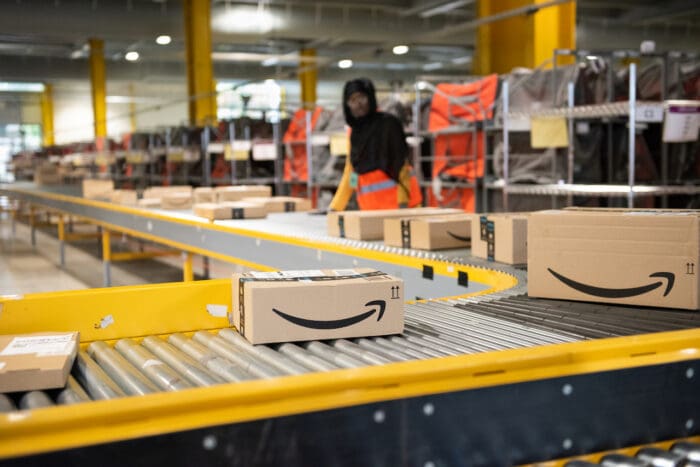Fulfillment Centers in the Era of Automation
In today's fast-paced retail landscape, emergence of e-commerce has changed the way businesses manage their operations, leading to the emergence of distribution centers. These specialized warehouses play a crucial function in the logistics by holding products, handling requests, and guaranteeing quick delivery to customers. As customer expectations for fast delivery and efficient support continue to grow, fulfilment centers have become essential for companies looking to maintain a competitive edge.
As a result of the advent of automated systems, the capabilities and efficiency of fulfilment centers have undergone significant advancements. Automated technologies and robotics have improved processes, allowing for quicker picking of orders, sorting, and packing. fulfilment centre but also minimizes staff mistakes, thereby improving customer satisfaction. When we explore the idea of fulfilment centers, it becomes evident that they are not merely storage facilities; they are dynamic hubs of innovation that meet the needs of the contemporary shopping experience.
The Importance of Automation in Distribution Centers
Automation has radically changed the landscape of distribution centers, enabling them to run with enhanced effectiveness and precision. With the implementation of advanced tools such as automated systems, AI, and ML, fulfillment centers can optimize processes that were once time-consuming and cumbersome. This shift not only speeds up order fulfillment but also facilitates greater reliability in inventory management and order fulfillment, reducing mistakes and the financial impacts.
One notable aspect of automated systems in distribution centers is the use of automated robots for various tasks, including choosing, packing, and sorting. Robotic solutions can efficiently navigate through aisles to collect items, ensure ideal packing arrangements, and organize shipments for dispatch. This also optimizes space utilization but also improves the overall performance of the center, catering to the rising demands of online shopping and faster delivery expectations from clients.
In addition to automated processes, information and analytics play a key role in the automation of distribution facilities. By leveraging live data, managers can make informed decisions about inventory levels, employee needs, and operational efficiencies. Forecast modeling can project market trends, enabling fulfillment centers to adapt effectively to changes in buyer habits. This extent of automation not only improves productive efficiency but also adds to a agile distribution system, eventually boosting buyer contentment and retention.
Perks of Automated Fulfillment Processes
Automated fulfillment processes significantly enhance productivity in fulfillment centers, enabling for faster order processing and delivery times. By incorporating innovative technologies such as automation technology and artificial intelligence, these centers can improve operations, lessening the time taken from order placement to shipment. This rapidity not only meets customer expectations but also offers businesses a leg up in the dynamic e-commerce landscape.
Another major advantage of automation is the boost in accuracy and reduction of human error. Automated systems can manage inventory, select products, and pack orders with precision, resulting in fewer mistakes in order fulfillment. This accuracy builds customer trust and loyalty, as consumers are more likely to return to a retailer that consistently supplies the correct items on time.
Cost-effectiveness is another key benefit of automated fulfillment. While the initial investment in technology might be substantial, the long-term savings can be considerable. Automation lowers labor costs, reduces waste, and optimizes storage and shipping processes. As a result, fulfillment centers can achieve higher throughput with diminished operating costs, making them more sustainable and profitable in the long run.
Obstacles and Coming Trends in Automation
As automated processes continues to alter fulfillment centers, several challenges have emerged that companies must deal with. One significant issue is the high initial investment required for advanced technologies such as robotic systems and intelligent software. Businesses often find it challenging to justify the expenses, especially SME enterprises. Additionally, workforce adjustment can be difficult, as employees may need to reskill to work alongside robots, leading to opposition and concerns about employment stability.
Looking to the future, fulfillment centers are expected to embrace more sophisticated technologies to enhance efficiency and precision. Developments such as driverless transport for warehouse transport and UAV delivery systems are in the horizon. These trends promise to streamline operations and reduce delivery times, but they also present regulatory challenges and require extensive infrastructure changes. The smooth implementation of these technologies will depend on partnership between technology companies and supply chain firms.

Another crucial trend is the growing focus on eco-friendliness within robotic fulfillment centers. As consumer demand for green practices grows, companies are investing in smart technologies to optimize power use and lower waste. Automated processes offers the possibility to create more efficient supply chains that minimize carbon footprints, but reconciling financial gains with green responsibility will be a critical challenge in the months to come.